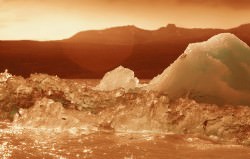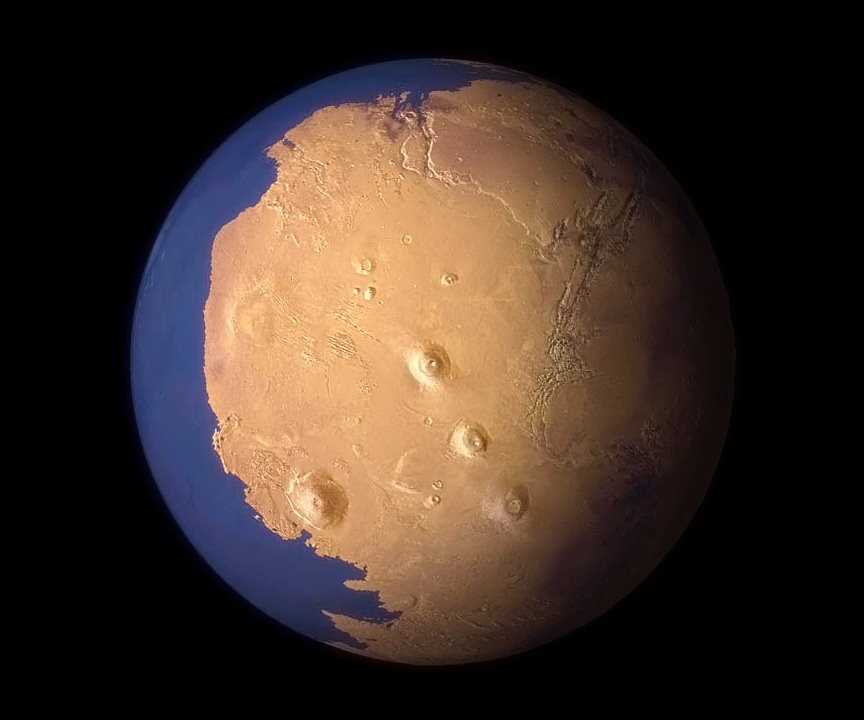[/caption]
Many planetary scientists suspect that Mars, now cold and very dry, once had a liquid water ocean covering parts of its surface. But this does not necessarily mean that the Red Planet was ever a tropical paradise… a recent paper by a team of astrobiologists suggests that Mars was much more bitter than balmy.
Astrobiologist Alberto Fairyn and colleagues have published a paper in the journal Nature Geoscience suggesting that the marked absence of phyllosilicates in Mars’ northern lowlands is indicative of a cold ocean environment, with perhaps even a boundary of frozen glaciers.
Phyllosilicates are minerals that, on Earth, are found readily in marine sediments and sedimentary rock that was formed in the presence of an ocean environment. These same minerals have also been seen via orbiting spacecraft spectrometers to be present in sediments located in Mars’ equatorial regions, but not in the northern latitudes. Fairyn and his team, intrigued by the disparity between existing models that described Mars as being once warm and wet and the lack of phyllosilicates in the north, used new climatic and geochemical models to deduce that Mars’ northern oceans must have been consistently near freezing, with portions even covered over by ice.

The current presence of moraines in the northern highlands also suggests that glaciers may have surrounded these frigid seas, which may have prevented the transportation of phyllosilicates down to the northern ocean basin. Again, to use our own planet as an analogy, moraines are rocky debris left over from the movement of glaciers. Their existence on Mars strongly suggests a period of early glaciation.
The research by Fairyn et al. contradict – or, more aptly, combine – two leading concepts of early Mars: one, that it was cold and dry and the existence of any liquid water was restricted to the equator for small periods of time; and two, that it was once globally warmer and wetter and sustained rivers, lakes and oceans of liquid water for extended periods.
Thus a cold Mars with an Arctic, icy ocean seems to be a more fitting causation of the current state of the planet, suggests Fairyn.
More research is planned, including running through more low-temperature models and hunting for ancient coastal areas that may have been impacted by icebergs. This will no doubt prove to be a challenge since much of the evidence is now buried deep beneath newer sediments and volcanic deposits. Still, Fairyn is confident that his model may help solve a long-standing debate over the history of the Red Planet.
Read more in an article by Bob Yirka on PhysOrg.
_____________________
Jason Major is a graphic designer, photo enthusiast and space blogger. Visit his website Lights in the Dark and follow him on Twitter @JPMajor or on Facebook for the most up-to-date astronomy awesomeness!

